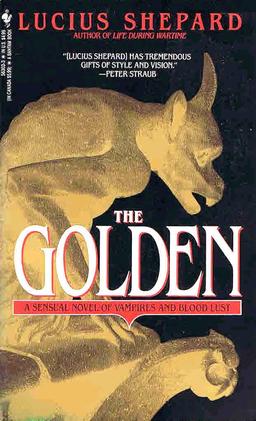Art of the Genre: David Trampier, 1954 – 2014
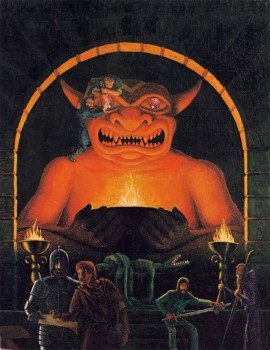 Today is a day of mourning for those gamers who were brought into the industry during the ‘great launch’ of Advanced Dungeons & Dragons in 1978. That year the AD&D Player’s Handbook hit the market, and nothing in the life of role-playing would ever be the same again. One reason, and certainly one of the most recognizable not named Gygax, was the cover art by David Trampier. On Monday, March 24th, Mr. Trampier passed away in southern Illinois at the age of 59.
Today is a day of mourning for those gamers who were brought into the industry during the ‘great launch’ of Advanced Dungeons & Dragons in 1978. That year the AD&D Player’s Handbook hit the market, and nothing in the life of role-playing would ever be the same again. One reason, and certainly one of the most recognizable not named Gygax, was the cover art by David Trampier. On Monday, March 24th, Mr. Trampier passed away in southern Illinois at the age of 59.
That age in itself is a tragedy, but one that can only be further exacerbated by what could have been for a man many gamers considered the great white whale of RPG fantasy artwork.
More words than can easily be counted have been written about Trampier over the years, most hypothesis and some truths, but in the end all we know now is that he is gone.
As an adept in the industry of RPG artwork, I’ve made it my life’s calling to track down bygone artists. But Trampier was never one of them. Sure, I’ve spoken in depth to his relations, and even as late as last August had a lengthy conversation with a group of RPG power brokers on the best course of action to approach him, including old friends on a road trip and private detectives, but in the end Trampier was even too far removed for me, and honestly I can’t say whether that now makes me happy or sad.
What I do know it that in the late 1980s, during his run with the Wormy comic for TSR’s Dragon magazine, Trampier suddenly went off the grid. At the time, he’d have been only 34 years of age, and smack in the middle of his prime as an artist. Now, 25 years later, he is gone, and not a single shred of artwork was produced by his hand over the course of those intervening years.
Now that brings me profound sadness.
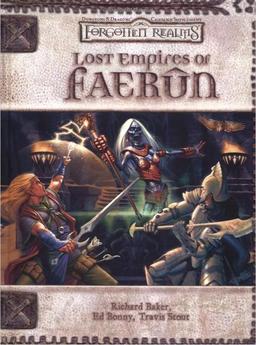
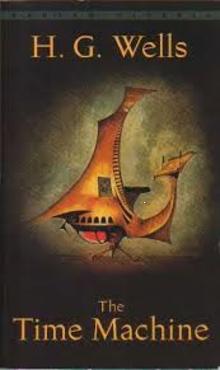


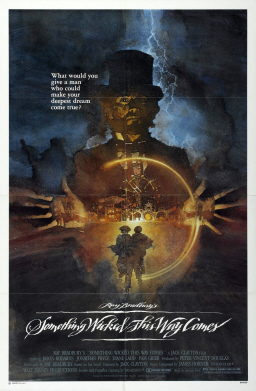



 Somewhere in Europe, probably around the end of the 13th or the beginning of the 14th century, someone put together a book of tales. Likely this someone was a cleric who wanted to compile a manual to use in sermons and preaching. The texts were written in Latin and featured stories of all sorts: romances, travellers’ tales, fragments of Pliny and Herodotus and Aesop. A number were brief and didactic, if not prosaic, describing some uninteresting event or propounding a riddle a nearby wise man quickly answered with too pat an explanation — but others of the tales were filled with miracles and adventure and magic, with angels and saints and knights and dragons. Each was given a detailed moral, with every incident and character shown to have allegorical significance. Whether because it boasted wonder-stories, because it made those wonder-stories Christian parables, or both, the book quickly became immensely popular. This being well before the age of print, manuscripts proliferated, gaining and losing stories along the way.
Somewhere in Europe, probably around the end of the 13th or the beginning of the 14th century, someone put together a book of tales. Likely this someone was a cleric who wanted to compile a manual to use in sermons and preaching. The texts were written in Latin and featured stories of all sorts: romances, travellers’ tales, fragments of Pliny and Herodotus and Aesop. A number were brief and didactic, if not prosaic, describing some uninteresting event or propounding a riddle a nearby wise man quickly answered with too pat an explanation — but others of the tales were filled with miracles and adventure and magic, with angels and saints and knights and dragons. Each was given a detailed moral, with every incident and character shown to have allegorical significance. Whether because it boasted wonder-stories, because it made those wonder-stories Christian parables, or both, the book quickly became immensely popular. This being well before the age of print, manuscripts proliferated, gaining and losing stories along the way.